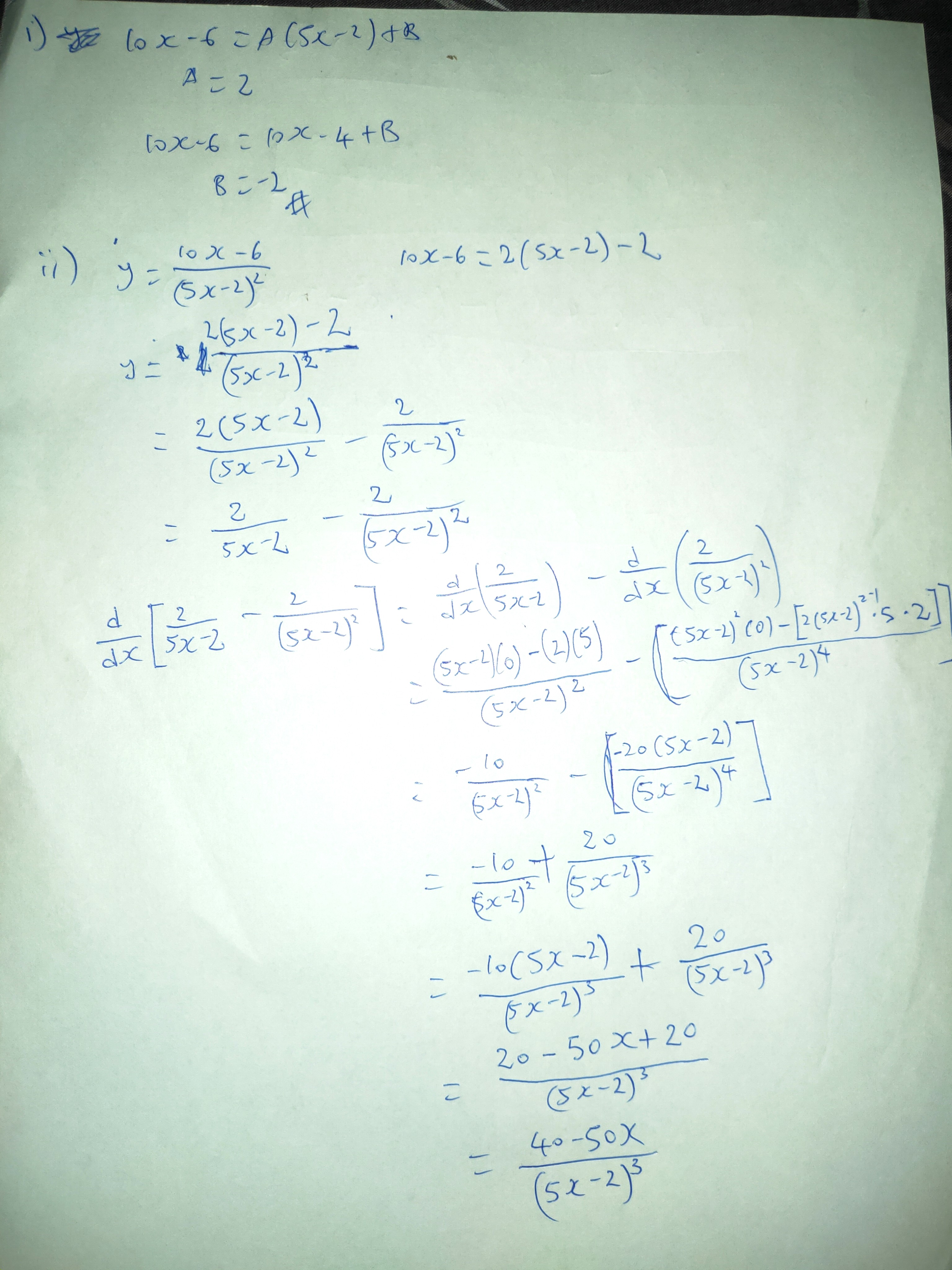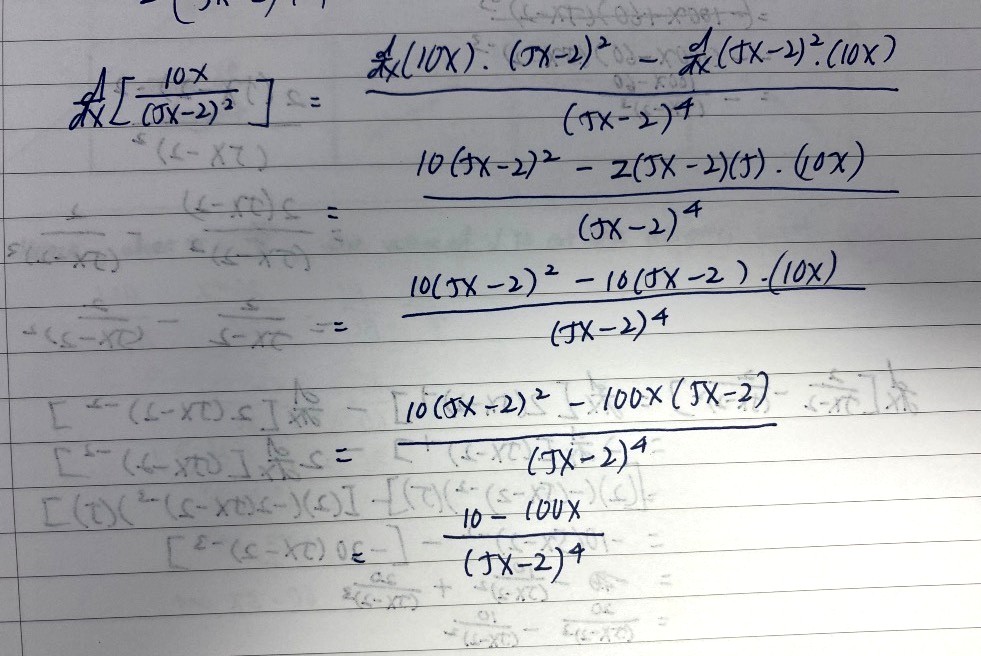Ask Singapore Homework?
Upload a photo of a Singapore homework and someone will email you the solution for free.

Question
junior college 2 | H1 Maths
2 Answers Below
Anyone can contribute an answer, even non-tutors.

Need help thx
10x - 6 = 5Ax - 2A + B
Comparing coefficients,
10 = 5A
A = 2
-6 = -2A + B
B = 2A - 6
= 2(2) - 6
= 4 - 6
= -2
y = (10x - 6) / (5x - 2)²
= (2(5x - 2) - 2) / (5x - 2)²
= 2/(5x - 2) - 2/(5x - 2)²
= 2(5x - 2)-¹ - 2(5x - 2)-²
dy/dx = 2(-1)(5x - 2)-²(5) - 2(-2)(5x - 2)-³(5)
= -10/(5x - 2)² + 20/(5x - 2)³
= 20/(5x - 2)³ - 10/(5x - 2)²
= (20 - 10(5x - 2)) / (5x - 2)³
= (40 - 50x) / (5x - 2)³
d/dx[(10x-6)(5x-2)^-2]
= [-2(10x-6)(5x-2)^-3](5)
= -10(10x-6)(5x-2)^-3
= -(100x-60)(5x-2)^-3
= - (100x-60)/(5x-2)^3
But the idea for this question is, part i) already allows you to rewrite the expression as partial fractions.
So we don't have to do product rule or quotient rule. Just differentiate the two terms separately
See 2 Answers







A side qn: how do I differentiate when two unknowns are multiplied to each other?
Let’s say d/dx[ (10x)(5x-2)^-2 ]
Do I ignore the 10x and
= -2(10x)(5x-2)^-3(5)
= -100x(5x-2)^-3
= - 100x/ (5x-2)^3
But what if it cannot be changed to another form that is the same as the denominator?
Do I have to use the quotient rule like the one I sent?